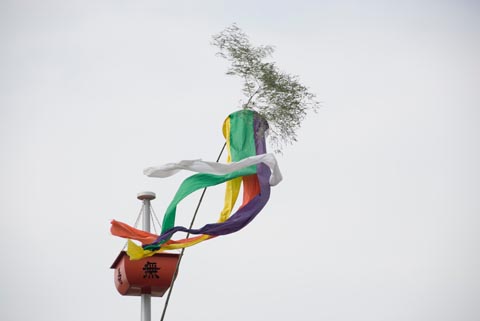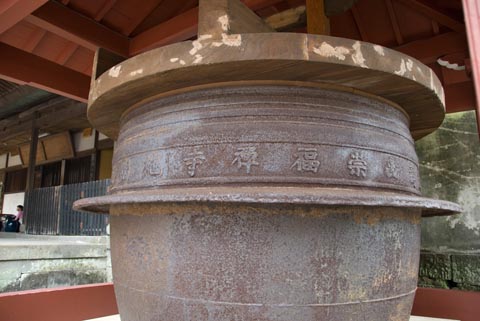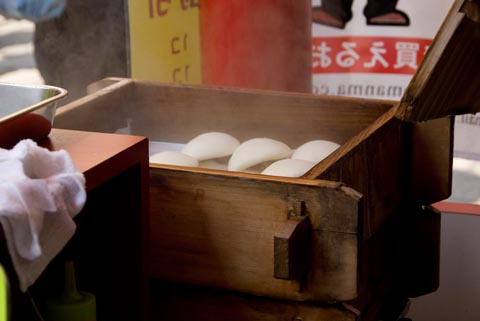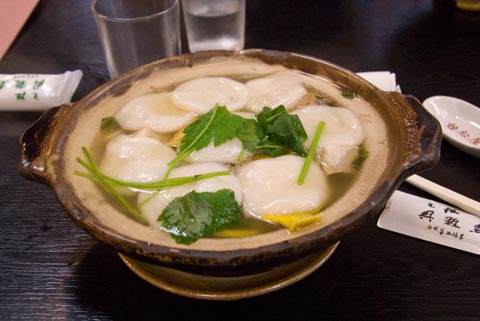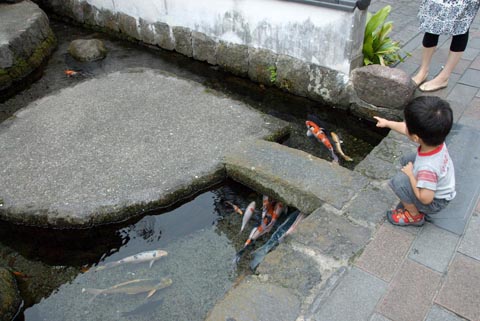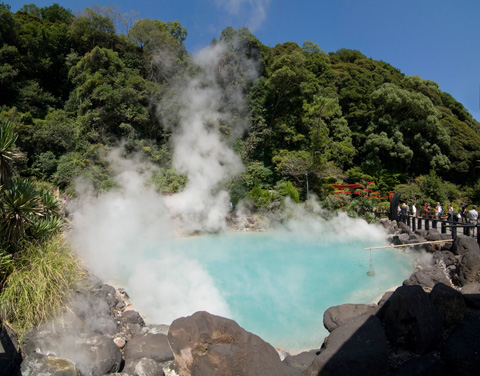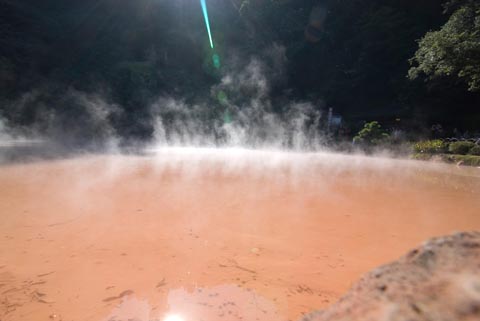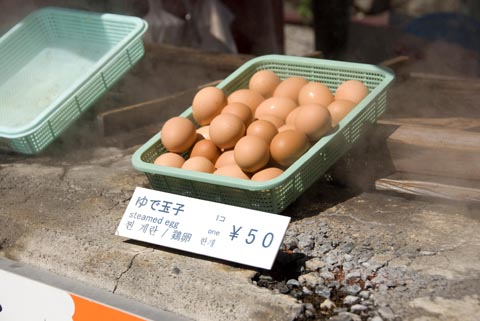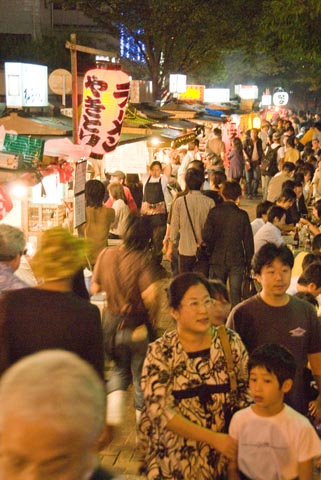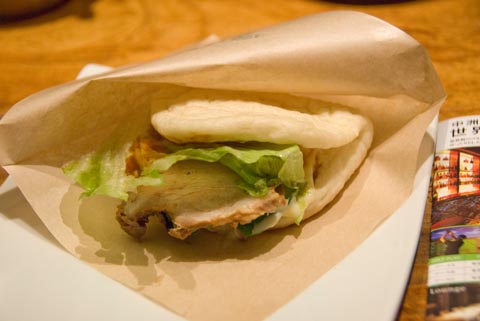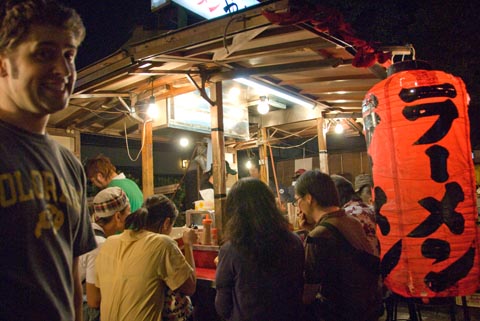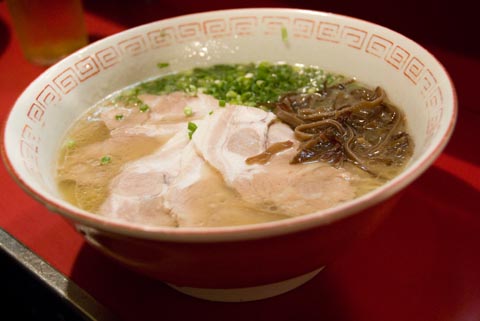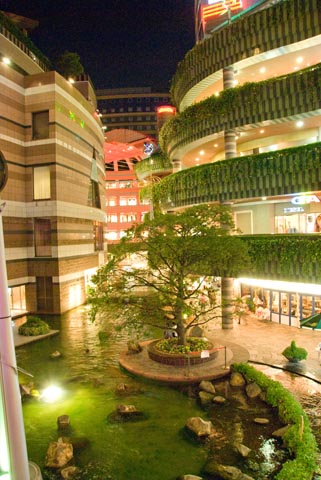Our next stop in Kyushu was Nagasaki. We had a pleasant morning stroll in the Teramachi district.
That’s a big pot! It might be hard to tell from the photo, but you could probably fit about ten of me in this pot. You can see a tiny person wearing a pink shirt in the background, that’s how big this pot is.
After our stroll we headed to Chinatown. We had Nagasaki’s famous “Chinese” noodle dishes, sara udon and champon. The noodle dishes were pretty forgettable, in fact, they seemed to be the same toppings on top of different noodles.
But while we were waiting for seats in the restaurant for lunch, we had some buta-kakuni buns that were very tasty.
The next day we headed out early in the morning to Unzen Onsen. Like Beppu, Unzen also has an area called a “hell,” where sulfurous water and steam bubble from the ground. Most of the hell is pretty dry these days, and crisscrossed with pipes and hoses that siphon the hot water off to the onsen hotels.
In some spots steam vents out of the ground. Spiky yellow sulfur crystals form around the mouth of the fissure.
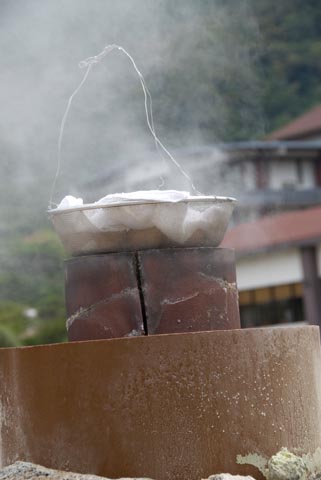
A basket of eggs cooks on top of a steam pipe
As at any onsen with a healthy number of tourists, they’ve devised a way to use the onsen’s heat to cook eggs to sell. This pipe basically vents steam directly out of the ground. Top it with a basket of eggs and a towl and you’ve basically got yourself a little egg-oven.
After Unzen we headed to Shimabara, which is just a short bus ride away. Shimabara is known as a city of water, with many famous canals, fountains, and springs. Koi are a famous symbol of the town.
First we enjoyed a lunch of guzoni at Himematsuya. Guzoni is the famous dish of Shimabara, a filling soup made with eel, fu (wheat gluten), kamaboko (fish cake), chikuwa (more fish cake), tamagoyaki (egg), shiitake, hakusai (napa cabbage), lotus root, gobo (burdock), chicken, mitsuba, and of course mochi (those are the white rice cakes on top of the soup in the picture). Mmm… if you find yourself in Shimabara, definitely try some guzoni.
After lunch we walked around to see the sights in Shimabara. First we went to Shimabara castle. Then we went to the city of swimming carp and the Hama-no-kawa spring.
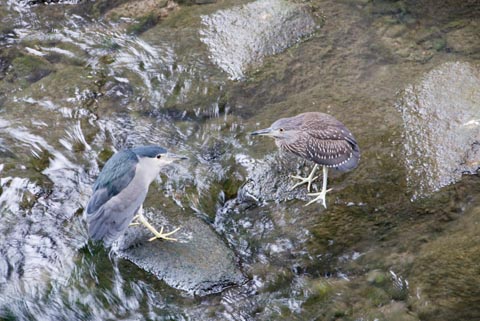
Aren’t these funny looking birds cute?
Interested in Nagasaki, Unzen, and Shimabara? Check it out here: http://www.ngs-kenkanren.com/eng/cs3.html
http://www.city.shimabara.lg.jp/english/003.html
See more from our trip at Alex’s photoblog: Nagasaki and Unzen and Shimabara
